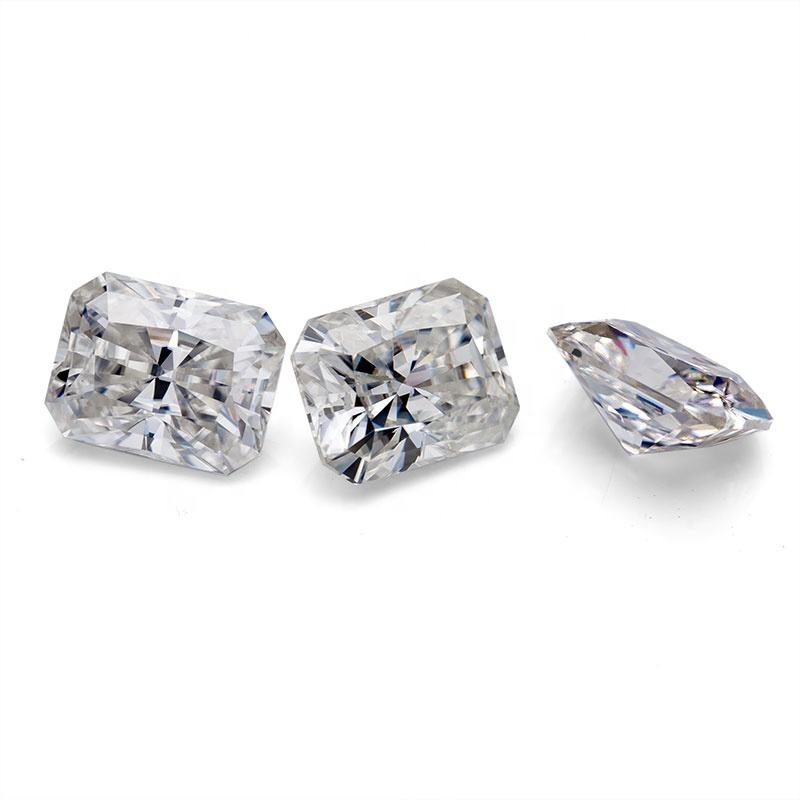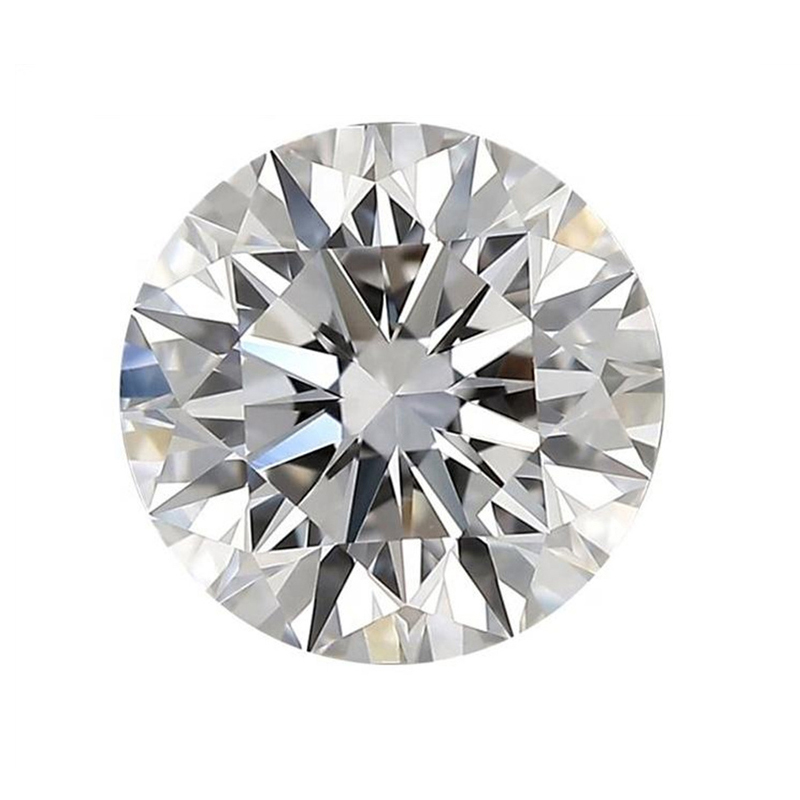4 carat lab grown diamond 3 carat 2 carat 1 carat cvd diamond price
Lab Grown Diamond Size
The carat is the unit of weight of a diamond. Carat is often confused with size even though it is actually a measure of weight. One carat equals 200 milligrams or 0.2 grams. The scale below illustrates the typical size relationship between diamonds of increasing carat weights. Remember that while the measurements below are typical, every diamond is unique.
Lab-grown diamonds follow the same 4Cs (cut, colour, clarity and carat weight) grading system as natural diamonds. Below is a brief overview of each category: 1. Cut: Refers to the precision and quality of a diamond's cut, including its proportions, symmetry and polish. A well-cut diamond reflects light beautifully, adding to its brilliance. 2. Color: Refers to the saturation of a diamond's color, which can range from colorless to yellow, brown, or even pink, blue, or green. The less color a diamond has, the more valuable it is. 3. Clarity: Refers to the presence or absence of any natural inclusions or blemishes within the diamond. Diamonds with higher clarity have fewer inclusions and are therefore considered more valuable. 4. Carat weight: refers to the weight of a diamond, 1 carat is equal to 0.2 grams. The greater the carat weight, the more valuable the diamond. However, it should be noted that lab-grown diamonds may have slightly different properties and trace elements compared to natural diamonds, which may affect how they are graded. The International Gemological Institute (IGI) and the Gemological Institute of America (GIA) also provide grading reports for lab-grown diamonds.

Lab Grown Diamond Color: D E F
Color is the natural color visible in a diamond and does not change over time. Colorless diamonds allow more light to pass through than a colored diamond, releasing more sparkle and fire. Acting as a prism, a diamond divides light into a spectrum of colors and reflects this light as colorful flashes called fire.

Lab Grown Diamond Clarity: VVS-VS
A diamond's clarity refers to the presence of impurities on and within the stone. When a rough stone is extracted from carbon deep beneath the earth, tiny traces of natural elements are almost always trapped inside and are called inclusions

Lab Grown Diamond Cut: EXCELLENT
The cut refers to the angles and proportions of a diamond. The cut of a diamond - its form and finish, its depth and width, the uniformity of the facets - determines its beauty. The skill with which a diamond is cut determines how well it reflects and refracts light.

Lab Grown Diamond Specs
| Code # | Grade | Carat Weight | Clarity | Size |
| 04A | A | 0.2-0.4ct | VVS VS | 3.0-4.0mm |
| 06A | A | 0.4-0.6ct | VVS VS | 4.0-4.5mm |
| 08A | A | 0.6-0.8ct | VVS-SI1 | 4.0-5.0mm |
| 08B | B | 0.6-0.8ct | SI1-SI2 | 4.0-5.0mm |
| 08C | C | 0.6-0.8ct | SI2-I1 | 4.0-5.0mm |
| 08D | D | 0.6-0.8ct | I1-I3 | 4.0-5.0mm |
| 10A | A | 0.8-1.0ct | VVS-SI1 | 4.5-5.5mm |
| 10B | B | 0.8-1.0ct | SI1-SI2 | 4.5-5.5mm |
| 10C | C | 0.8-1.0ct | SI2-I1 | 4.5-5.5mm |
| 10D | D | 0.8-1.0ct | I1-I3 | 4.5-5.5mm |
| 15A | A | 1.0-1.5ct | VVS-SI1 | 5.0-6.0mm |
| 15B | B | 1.0-1.5ct | SI1-SI2 | 5.0-6.0mm |
| 15C | C | 1.0-1.5ct | SI2-I1 | 5.0-6.0mm |
| 15D | D | 1.0-1.5ct | I1-I3 | 5.0-6.0mm |
| 20A | A | 1.5-2.0ct | VVS-SI1 | 5.5-6.5mm |
| 20B | B | 1.5-2.0ct | SI1-SI2 | 5.5-6.5mm |
| 20C | C | 1.5-2.0ct | SI2-I1 | 5.5-6.5mm |
| 20D | D | 1.5-2.0ct | I1-I3 | 5.5-6.5mm |
| 25A | A | 2.0-2.5ct | VVS-SI1 | 6.5-7.5mm |
| 25B | B | 2.0-2.5ct | SI1-SI2 | 6.5-7.5mm |
| 25C | C | 2.0-2.5ct | SI2-I1 | 6.5-7.5mm |
| 25D | D | 2.0-2.5ct | I1-I3 | 6.5-7.5mm |
| 30A | A | 2.5-3.0ct | VVS-SI1 | 7.0-8.0mm |
| 30B | B | 2.5-3.0ct | SI1-SI2 | 7.0-8.0mm |
| 30C | C | 2.5-3.0ct | SI2-I1 | 7.0-8.0mm |
| 30D | D | 2.5-3.0ct | I1-I3 | 7.0-8.0mm |
| 35A | A | 3.0-3.5ct | VVS-SI1 | 7.0-8.5mm |
| 35B | B | 3.0-3.5ct | SI1-SI2 | 7.0-8.5mm |
| 35C | C | 3.0-3.5ct | SI2-I1 | 7.0-8.5mm |
| 35D | D | 3.0-3.5ct | I1-I3 | 7.0-8.5mm |
| 40A | A | 3.5-4.0ct | VVS-SI1 | 8.5-9.0mm |
| 40B | B | 3.5-4.0ct | SI1-SI2 | 8.5-9.0mm |
| 40C | C | 3.5-4.0ct | SI2-I1 | 8.5-9.0mm |
| 40D | D | 3.5-4.0ct | I1-I3 | 8.5-9.0mm |
| 50A | A | 4.0-5.0ct | VVS-SI1 | 7.5-9.5mm |
| 50B | B | 4.0-5.0ct | SI1-SI2 | 7.5-9.5mm |
| 60A | A | 5.0-6.0ct | VVS-SI1 | 8.5-10mm |
| 60B | B | 5.0-6.0ct | SI1-SI2 | 8.5-10mm |
| 70A | A | 6.0-7.0ct | VVS-SI1 | 9.0-10.5mm |
| 70B | B | 6.0-7.0ct | SI1-SI2 | 9.0-10.5mm |
| 80A | A | 7.0-8.0ct | VVS-SI1 | 9.0-11mm |
| 80B | B | 7.0-8.0ct | SI1-SI2 | 9.0-11mm |
| 80+A | A | 8.0ct + | VVS-SI1 | 9mm+ |
| 80+B | B | 8.0ct + | SI1-SI2 | 9mm+ |







